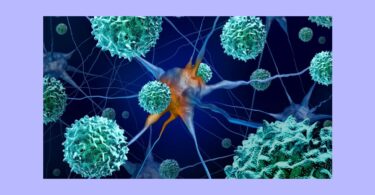The homeopath and the patient must remain central to the process, rather than being sidelined as an AI operator and a passive subject of study, respectively -V. Guru Charan
Generative artificial intelligence (AI), such as GPT-4 and Llama 3, has the potential to transform homeopathic practice. Generative AI, based on transformer architecture of deep neural networks, refers to a type of artificial intelligence that is capable of creating new content, such as images, text, or music based on the user prompts (user input). Generative artificial intelligence acquires insights from its training datasets and harnesses that knowledge to generate original content.
Large language models (LLMs) are a special class of generative AI models that have been in the spotlight since the release of ChatGPT by OpenAI, in late November 2022. Currently, many open source models like Llama 3, Mistral 8x22b etc, are available, in addition to closed source models like Claude Opus, Gemini 1.5, GPT-4 etc.
One of the most widespread applications of AI is automating time-consuming repetitive tasks. It can help free up homeopaths to better provide direct care to their patients. For instance, a homeopath could use a LLM chatbot to collect patient’s medical history, initially. The chatbot could then use that information to generate a detailed homeopathic case summary and a list of potential homeopathic remedies for the individual, along with reasons for suggesting them.
Based on the analysis of the detailed case summary, the homeopath could then review the list and based on his/her in-depth analysis of the individual’s symptoms, modalities etc, prescribe the most appropriate remedy, potency, and posology for the patient.
To generate a list of suitable homeopathic medicines, the LLM powered-chatbot could retrieve relevant material (from a vector database using retrieval-augmented generation [RAG]) from the standard repertories like Synthesis, Kent, and Boger Boenninghausen’s Characteristics and Repertory, at its backend.
One of the advantages of LLM powered homeopathic software or chatbot over a standard homeopathic repertory software would be that the homeopath would not need to rubricize every symptom of the patient into precise repertory rubric language.
The LLM could comprehend the patient’s expressed symptoms in natural language. In addition, AI may add a new dimension by highlighting any drug provings relevant to the totality of symptoms in the case. Another major advantage with advanced multimodal LLMs is that they can directly take audio or video input (instead of only text) from patient. In fact, using AI agents, it may soon be possible to even conduct a preliminary video interview of the patient.
An LLM could also be used to analyze a patient’s medical records and laboratory results to identify hidden concomitants, characteristic particulars or rare and peculiar symptoms that may lead to faster identification of the simillimum. This could add a new layer to homeopathic analysis, as currently a homeopath relies primarily on first-person account of patient’s subjective experience in prescribing them.
While the patient’s subjective experiences remain the primary source of information in homeopathic practice, incorporating observations from close family members, as well as objective analyses from AI systems, can sometimes provide insights that may prove helpful in complex cases.
For example, a large language model, like Gemini 1.5 could be engaged to analyze pathology reports and in the near future, possibly even the imaging data (such as X-ray reports) of a patient suffering from chronic pain. In addition, a machine learning model could potentially identify hidden patterns in the data that the homeopath may not have noticed.
The homeopath could use this information to develop a more comprehensive understanding of the patient’s condition and to develop a more effective treatment plan. In the near future, powerful AI models may be harnessed to create a virtual treatment simulation to help the patient visualize their healing process. This may help the patient to understand their miasmatic tendencies and blockages, and feel more empowered as an active participant in their recovery.
In addition to homeopathy, in the domain of agro-homeopathy, multimodal LLMs like GPT-4V (V stands for vision capabilities) can be employed to develop a mobile application that can be fed user input in the form of an image, text or video, which the underlying LLM will process to give relevant suggestions.
For instance, the user prompt can be a textual description or a photograph of a rose plant afflicted by black spot disease and a request for advice on tackling it using homeopathy. The LLM can process this input and give suggestions on how to remedy the situation using homeopathic medicines.
Despite the widespread application of generative AI in virtually every domain today, it is best to temper the growing optimism with some caution. Currently, there is an active debate on AI ethics and regulation, around the world. So, it is high time that ethical issues arising out of AI usage in homeopath, are discussed widely in the community. In addition, data privacy is paramount to physician-patient confidentiality, therefore, it is necessary to ensure sound data protection protocols.
A very real concern could be that the human-element in the process might be replaced by machine intelligence. The homeopath and the patient must remain central to the process, rather than being sidelined as an AI operator and a passive subject of study, respectively.
AI has to be used as an efficient tool by trained homeopaths, rather than homeopaths relying blindly on AI to spit the result of analysis. The active involvement of homeopaths and patients is particularly important as LLMs are known to hallucinate, resulting in factually incorrect responses. Therefore, homeopaths should presumably undergo a basic training in handling this new tool, so that they have a better intuition about the inner dynamics of the model.
Much like any novel technology, if harnessed judiciously, AI has the capacity to improve the experience of doctors as well as patients by improving the odds of successful treatment in reduced time. These exciting possibilities represent the thin edge of the wedge, offering a glimpse into the rapidly expanding opportunities within the dynamically evolving AI landscape.





